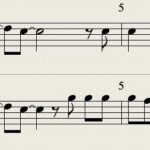In 2019, TikTok became the epicenter of a viral mystery when a video emerged depicting a woman dancing in Serbia in an unusual and unsettling manner. This clip sparked intense curiosity, drawing connections to an obscure event said to have occurred on September 26, 1998. Despite the online frenzy, concrete details about this “Serbian Dancing Lady” remain elusive, fueling speculation and leaving much to the imagination of internet users worldwide. While anecdotal accounts from community blog users like Niko and Solomon have surfaced, claiming encounters with this enigmatic figure, the digital nature of these stories makes verification challenging.
Niko recounts a disturbing experience while walking with his mother. He describes spotting a woman dancing strangely in the distance. Suddenly, this figure allegedly rushed towards them, unleashing a torrent of profanities and declaring herself the “ambassador of death.” According to Niko, she demanded his mother’s life for an ancient Serbian ritual intended to resurrect a king. Niko was particularly struck by the dancer’s bizarre movements, noting how every muscle in her body seemed to be involved in her otherworldly dance.
Intrigued by Niko’s chilling narrative, Solomon decided to investigate for himself. Armed with a camera, he ventured into the streets of Serbia, hoping to capture some evidence. In a startling turn of events, Solomon claims to have encountered the Serbian lady dancing in her signature peculiar style. Upon noticing Solomon’s camera, she supposedly let out a blood-curdling shriek and exclaimed, “Your mother’s soul is mine,” before Solomon fled in terror back to the safety of his hotel room.
Since the initial reports and viral video, conflicting information has emerged. Some sources claim the woman has been apprehended by authorities due to her unsettling behavior. However, other reports suggest she has evaded capture, with authorities struggling to locate her. Regardless of her current status, the mere mention of the “Serbian Dancing Lady” has ignited significant online interest, resulting in a massive surge in searches for any information related to her.
The source of the fear associated with the Serbian Dancing Lady is inherently ambiguous. The myth surrounding her appears to be fluid and varied, lacking definitive explanations to justify the widespread apprehension. Fear of mythical or supernatural beings often stems from the unknown, perceived danger, or deeply ingrained cultural beliefs. Legends and stories tap into our most primal fears, and the fear of the unknown is a universal human experience.
While the Serbian Dancing Lady gained viral traction on TikTok, the online conversation has primarily revolved around the frightening myths and legends rather than confirming her actual existence. For most, she remains an enigma, with no solid proof to substantiate the claims surrounding her. Nevertheless, many TikTok users, captivated by the mystery, persistently seek to validate these unsettling rumors.
Known also as “The Dancing Shadow,” the Serbian Dancing Lady myth bears resemblance to existing folklore. One origin story suggests the myth stems from the tale of a woman who fell in love with someone from a different village, facing opposition from her family due to traditional beliefs. In this version, the woman tragically dies, and her restless spirit is condemned to roam the countryside at night, dancing and singing a mournful melody. Encountering her “Dancing Shadow” is believed to be an omen of impending death or misfortune. This legend, passed down through generations in Serbia, has inspired various forms of artistic expression, including music, literature, and film.
Authorities have reportedly acknowledged the situation, stating they are monitoring the activities associated with the Serbian Dancing Lady. They have confirmed that the viral video was indeed filmed in Belgrade, Serbia. Furthermore, individuals claiming to have encountered the woman depicted in the video have allegedly received threats since 2019, adding another layer of intrigue and concern to the narrative. The subject has sparked heated debates across social media platforms globally, with users worldwide engaging in discussions about the reality of this modern-day myth.


